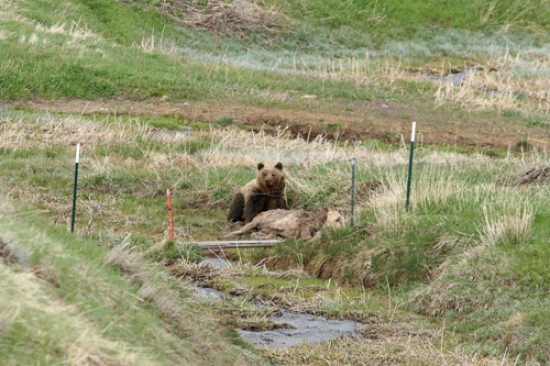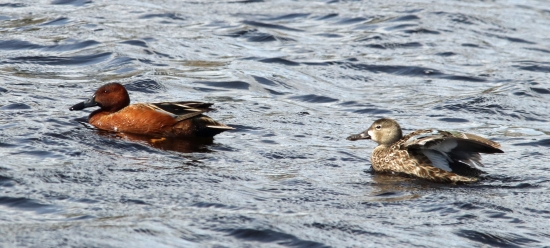Taking the round about
Still No Owlsby Dan Hartman
May 6, 2018
Word came out Thursday, the Park isn't going to open Cooke Pass (our road to Cody) until late next week.Well, I just couldn't wait that long. I've been chomping at the bit to check my great gray nests over the pass, so Cindy and I made the 325 mile drive to get ten minutes from our cabin.
We made Dead Indian Pass at noon and dropped down into Sunlight Basin. When we approached my first and easiest to get to nest, I was surprised by the snow depth. Easily three feet in spots.
I started up the steep climb, plunging in mid-thigh at times. The usual ten minute route in took twenty-five minutes and when I reached the bench, I could not locate the nest! After a half hour of searching I finally determined the stick nest must have come down under the weight of heavy snow. I did find a stick nest farther east but it was empty. There was a snag nest farther upslope, but I just couldn't get there.
We drove to my next nest location but I just shook my head. The snow was even deeper.
On to the road to the Beartooths. Out in the open, the landscape was snow free. The many ponds held varities of ducks. We spotted green-winged teals, cinnamon teals, ring-necked ducks, golden eyes, coots, mallards and canada geese. The only bear sign was a big scat in the middle of the road.
As we started up 212 to the Beartooths our hopes were high. The road was bare and dry. We crossed Lake Falls Bridge, rounded the curve and our progress ended in a sea of snow. It was way to far to walk to the close nest. Our journey ended.
We parked at the old beaver pond and had lunch. The snow depth this late worries me. Last year it prevented the great grays from nesting. Would this year be the same? Or would the owls just arrive late. All I can really do is wait ten days, then try again.
It was late afternoon when we started for our motel in Cody. At mile marker #43, I glanced up a side ravine and thought something looked out of place. We stopped, backed up and using binoculars found what looked like a mass of rock and brown grass, was actually a grizzly feeding on an elk.
I moved closer until I reached a fence row. The grizz spotted me and rose to its full height before slashing its front paws into the water a couple of times to warn me away.
This is officially the farthest we've seen a grizz east of Yellowstone. But only by a mile. Three years ago a sow and three cubs just up the road. Five years ago two grizzlies fed on a carcass five miles farther up the road. Still it's surprising to have a grizzly bear this far fom cover and in the middle of cattle range.
For help referencing place names, use the Yellowstone SpotR app:
• Download Yellowstone SpotR for Apple iOS
• Download Yellowstone SpotR for Google Android





